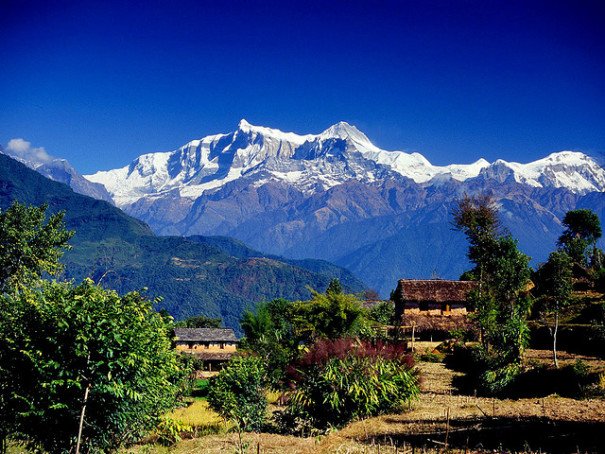
Saved by High-Proof Spirits

Saved by High-Proof Spirits
Millet Moonshine in Amppipal
You know that you’re in a truly remote corner of this world when you see it: moonshine, a home-distilled, high-proof spirit made using whatever basic ingredients—typically a staple grain or a food made from a staple grain—happen to be readily available in that particular place. In Appalachia, they use corn; in Russian villages, they use just about anything—bread, potatoes, beetroot, rice or tea—to make samogon; in pork-loving rural China, they use sorghum to feed their pigs and make baijiu.
In Nepal, they use millet or rice to make their moonshine. This I learned first-hand when I lived and worked in a small village in Amppipal in the foothills of Annapurna. I, along with a handful of other western volunteers, stayed in a concrete guesthouse—a palace by local standards—next to Ampippal Hospital. All of us, except for me, were medical students or doctors. The hospital, the only properly-equipped one in the entire region, was run by a mildly eccentric Austrian surgeon who’d chosen to devote his retirement to helping those less fortunate than himself whilst wearing socks with sandals. A truly noble man.
Most afternoons, after work, we would go to the thatch-roofed wooden shack housing the village’s one convenience store/bar and have a beer on the wooden table outside with him. There, he would hold court and regale us with tales from his long and storied life in medicine. True to his Teutonic constitution, he never went to bed before downing at least six beers.
On our last night in the village, we, some villagers and some folks from the Gorkha Foundation—a terrific non-profit organization we worked with that operates in the region to improve living conditions and strengthen the local economy—gathered in our house to eat and drink. There was dahl and rice for dinner, which made for a welcome change. Normally, our main meal of the day was a hot lunch of rice, dahl, and three varieties of curry vegetables cooked for us by a kindly, middle-aged village lady whom we called didi, the Nepali word for “older sister” that is also commonly used to address women in one’s approximate generation. Dinner was usually just a few slices of the bread that didi had baked for us at lunchtime and/or a bowl of the villagers’ favorite snack: Maggi two-minute noodles.
The hot dinner turned out to be a necessity rather than a luxury, because the villagers seemed to regard beer as too soft a drink for this important social event. Instead, each of us was given a tall, metal, half-pint-sized cup. Inside was a clear liquid. I sniffed it carefully. Subtlety was not the drink’s strong point. It smelt of fire and tasted like it, too. After a few sips of the unidentified clear liquid, I tried some of the store-bought Signature brand whisky that somebody had produced. It tasted like Mountain Dew. The warmth provided by both spirits was welcome. The days are warm and sunny in Amppipal in January, but, once the sun sets, which it does suddenly at around 5:30 pm, it gets very cold, very fast.
I wondered where the clear fire liquid we were drinking had come from. The only bottle that I could see on our large rectangular dining table was the Signature whisky. I asked one of the villagers. He led me around the corner to our small, narrow kitchen and pointed to a white, rectangular plastic bottle sitting underneath our kitchen sink. It had that distinctive shape that only motor oil bottles have—one top corner of the bottle was diagonally cut off and a handle protruded from it—and, perhaps more relevantly, it was covered in black smear marks. I’d been living in the house for months. I’d never noticed the bottle there and, even if I had, I would’ve assumed that it held motor oil, not a local moonshine made from millet.
For one brief moment, I worried that we might cause ourselves blindness or permanent brain damage by drinking the millet moonshine. Then I thought: “Meh, it’s too late to turn back now. We’ve been drinking that stuff for an hour already.”
So we sat and we drank. Three Australians, an Austrian, a German, and a bunch of Nepalis. No matter where you are in the world, high-proof spirits, especially of the homemade variety, are an effective way to break down whatever lingering cultural barriers may exist.
I woke up the following morning with a brain-splitting headache but, fortunately, no other ill effects, despite the visibly questionable hygiene of the plastic bottle in which the moonshine had been stored. I’d been saved by the extraordinarily high alcohol content of the homemade booze.